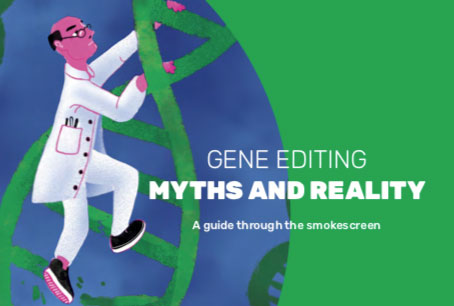USDA plant scientists have been looking at ways of turning Hawaii's unwanted GM papaya into biofuel
EXCERPT: The proposed scheme under investigation is to feed sterile pureed waste papaya to algae which naturally accumulate fat when they run out of nutrients. After this, the algal cells are disrupted so that their glycerol and oil content can be extracted. The algal residue can be added to fishmeal, the glycerol can be added to feedstock, the oil becomes biodiesel, and the farmers have another income stream.
---
The greening of unsold GM papaya?
GM-free Scotland, July 2018
https://gmfreescotland.blogspot.com/2018/07/the-greening-of-unsold-gm-papaya.html?spref=fb&m=1
Shoe-horning your agriculture into the modern high-input, energy-hungry globalised system is particularly problematic for remote areas. Even Hawaii - American soil but a long way from the mainland - has realised it has an economic imperative for self-sufficient and sustainable resource management.
At present, Hawaii imports some 90% of its energy, and fertilisers must also be imported at a high cost.
Noting the large proportion of the Islands' papaya crop which can't be marketed, US Department of Agriculture (USDA) plant scientists have been looking at ways of turning this waste into fuel.
Papaya is a $10 million business in Hawaii, but farmers have hobbled themselves by growing papaya genetically modified to be resistant to ringspot virus: many countries won't import them. About a third of the papaya crop is discarded because it's bruised or mis-shapen.
The proposed scheme under investigation is to feed sterile pureed waste papaya to algae which naturally accumulate fat when they run out of nutrients. After this, the algal cells are disrupted so that their glycerol and oil content can be extracted. The algal residue can be added to fishmeal, the glycerol can be added to feedstock, the oil becomes biodiesel, and the farmers have another income stream.
In future, other Hawaiian crops such as sweet potato, guava, banana, and cacao pulp may be fed into the biodiesel pipeline.
OUR COMMENT
Does this sound like a wonderfully sustainable, green venture, or is it just a way to use a GM crop which doesn't have enough of a market but produces a lot of waste?
Consider the energy input and potential for environmental pollution at each stage of the papaya-to-biodiesel process:
* fossil-fuel hungry imported fertiliser to grow the papaya
* energy required for pureeing and sterilisation of the papaya to produce a clean nutrient liquid
* energy required for distillation or solvent extraction of glycerol
* crude petroleum or cane sugar (grown with fertilisers) are the base material of the hexane solvent needed for the oil extraction
* workers will be exposed to the neurotoxic effects of hexane before it evaporates off the extracted oil
* once in the atmosphere, hexane interacts with pollutants such as nitrogen dioxide and ozone to form a photochemical smog
Beware new-fangled technological fixes, such as biodiesel from wasted food crops, to solve problems caused by the last round of technological fixes (such as GM), caused by the previous round of technological fixes (such as artificial fertilisers), all bound together by the constraints of monoculture- and yield-fixation (check out RE-THINKING THE YIELD-OBSESSION - June 2018).
SOURCES:
Sara Novak, Could papayas help Hawaii become energy independent? Sierra 12.09.18
Hexane, www.npi.gov.au
Ignacio Contreras-Andrade, et al., 2015, Purification of glycerol from biodiesel production by sequential extraction monitored by 1H NMR, Fuel Processing Technology 132









